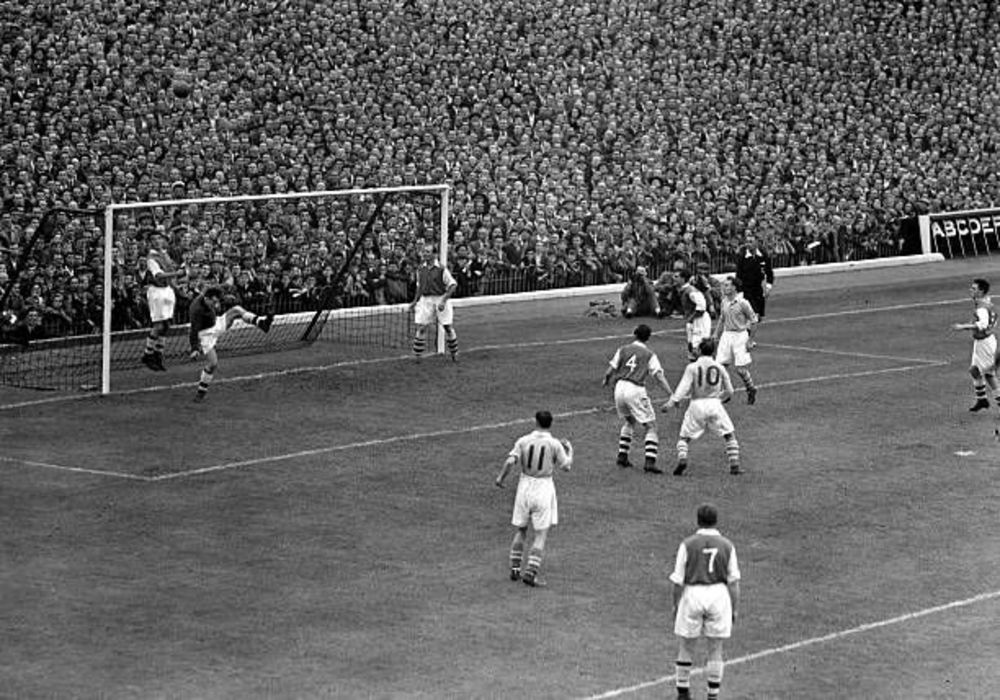
Joe Wade heading off the Arsenal goalline
Striker Martin Buglione enjoyed a long career as a forward which stretched from 1984 until 2005.
His early days were spent with Enfield, Boreham Wood, Dagenham and Welling United.
It was whilst with the Wings in the Conference that he had his first taste of Southern League football on loan to Tonbridge in the Southern Division.
After a short spell with Alma Swanley in the Kent League, Buglione joined Southern League Southern Division Margate in the summer of 1990, and it was whilst at Hartsdown Park that his career really took off.
He went on to make 130 appearances for Gate and score 64 goals.
He netted almost 50 times in 1992/93 alone which earned him a club-record transfer (undisclosed) to Scottish Premier side St Johnstone.
However, he made only 19 appearances for the Saints and scored 2 goals before returning to Kent a year later to join then-Southern Premier Division side Sittingbourne in exchange for a £10,000 fee.
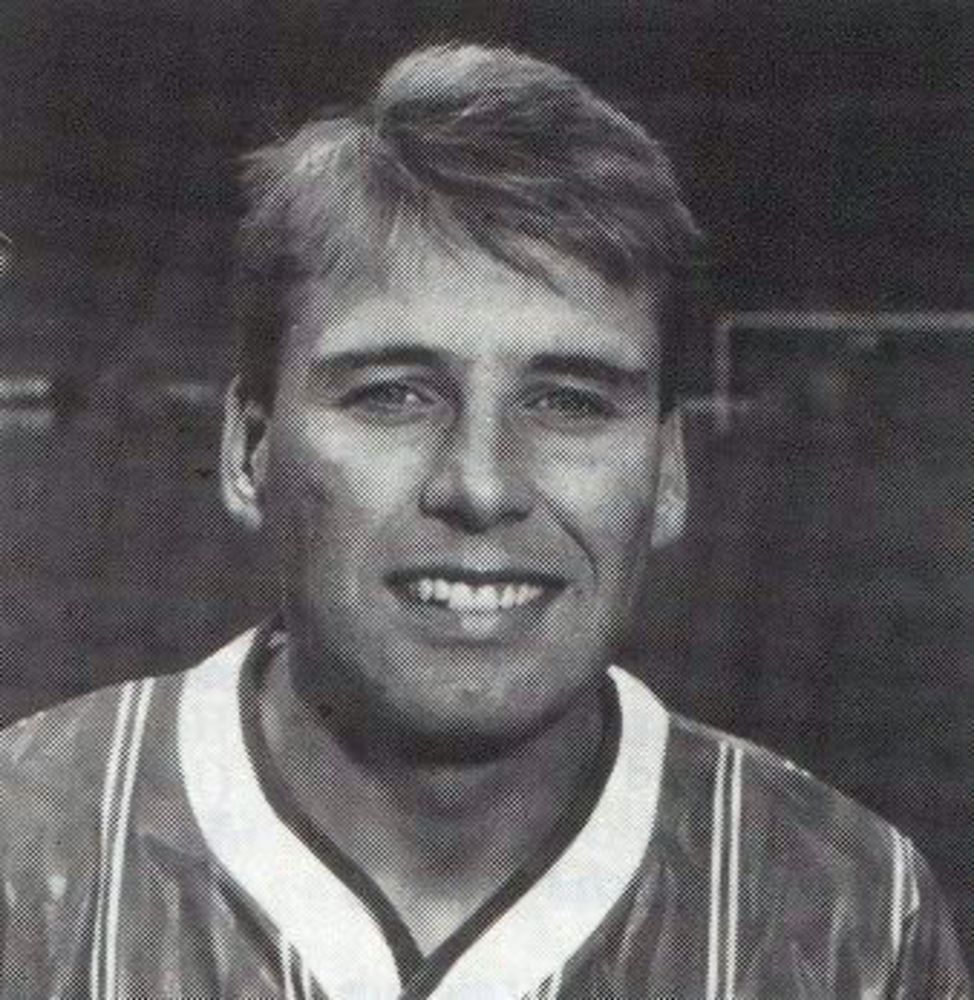
Whilst on the books at Sittingbourne, Buglione (pictured) was selected as part of the Southern League`s squad for the Centenary match against Millwall at Ashford in March 1994.
In the summer of 1995, he re-joined Margate and continued to score goals until 1998 when he left to play in the Conference for Hayes, managed by Terry Brown, who had pursued him for several seasons and, when he reached the end of his contract with Gate, Brown acted swiftly.
But he seemed to have left his scoring prowess in Kent – in 19 games for Hayes he managed only one goal.
From Hayes he went to Hampton, whom he helped save from relegation from the Isthmian Premier Division.
At the start of the 2000/01 season, Buglione returned to Boreham Wood, thirteen years since his initial spell at Meadow Park.
He helped Wood to promotion to the Isthmian Premier before returning to Kent with Kent Leaguers Deal Town in March 2000. However, he wasn`t eligible to play in Deal`s big day out at Wembley in the FA Vase Final a couple of months later.
He started the 2000/01 season back at Welling, now back in the Southern Premier Division, but stayed only a few weeks before moving to Ashford Town before quickly switching to Isthmian Premier outfit Purfleet in October 2000.
He remained with Fleet until November 2002, spending part of that time as reserve team player-manager, before signing for Southern Eastern Division side Dartford.
He stayed with the Darts until October 2003 and after a short spell out of the game, signed for then-Kent Leaguers Maidstone United in March 2004.
In January 2005, he signed for Southern Eastern Division side Erith & Belvedere but left after only a handful of games.
In August 2005, Buglione was tempted out of retirement by former Margate team-mate Iain O`Connell, who was player-manager of then-Southern Eastern Division outfit Great Wakering Rovers.
However, by October 2005 he decided he`d had enough and hung up his boots.
He returned to the game in the summer of 2006 as a coach with Spartan South Midlands League side Broxbourne Borough and left at the end of the 2007/08 season.
In November 2009, he made a surprise return to the game as assistant manager at Isthmian North side Ware, where he helped guide his son Danny make it into the first team at Wodson Park.
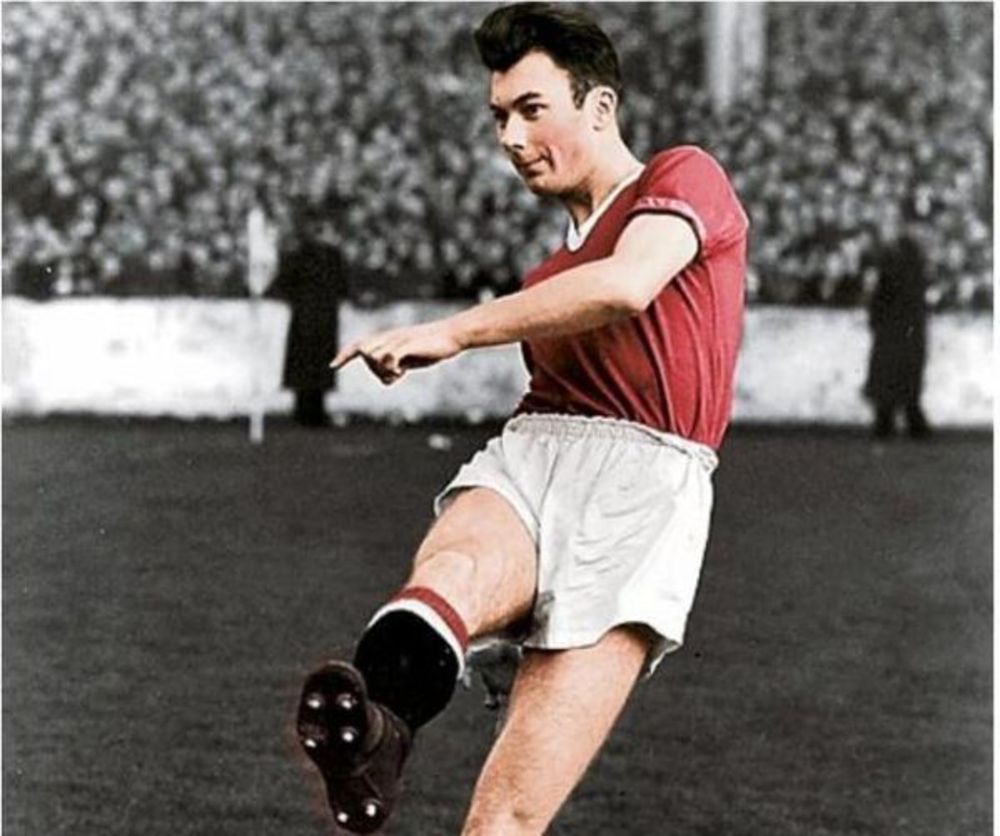
Inside forward Colin Webster was good enough to earn four full international caps for Wales at a time when they were blessed with a number of quality inside forwards and forwards such as Ivor Allchurch, Cliff Jones and, of course, the great John Charles.
Indeed, three of his caps came during the 1958 World Cup in Sweden.
Initially with Cardiff City, he joined Manchester United in May 1952.
A part-time fitter, it was his spell in National Service that took Webster to Old Trafford when team-mate Dennis Viollet recommended him to United boss Matt Busby.
Following a trial, he was offered a contract in 1952 and became a useful utility player, albeit on the periphery of the first-team picture as the legendary `Busby Babes` nailed down places.
Webster was known for a niggly approach and did not help himself by regularly getting suspended, making only 38 Football League appearances during his first six years with United.
He was the first British player to be sent-off on four occasions in English post-war football, but his deceptive skill earned him enough game time to win a First Division championship medal in 1956 and his first Wales cap against Czechoslovakia in 1957.
Much changed after that fateful day in Munich with Webster suddenly finding himself as one of the few experienced fit players at Manchester United, playing in the emotional FA Cup Final defeat to Bolton Wanderers in 1958.
After those three appearances for Wales during the 1958 World Cup, including a match against a Brazil side that featured Pele, he again fell out of favour at Old Trafford and was transferred to Swansea Town for a £7,500 fee.
His time at the Vetch Field was more successful, scoring 65 goals in three-and-a-half seasons after reverting to centre-forward.
He then spent a season at Newport County, making 31 appearances with 4 goals, before joining Southern League Premier Division side Worcester City.
Webster kicked off life at City with a goal in a 3-0 demolition of Romford as part of a star-studded team including ex-England international Norman Deeley, former Northern Ireland international Peter McParland and prolific marksman John Fairbrother.
However, his reputation for an `overzealous` style soon saw him come to the attention of referees again and he was also suspended by the club for “swearing at a lady spectator”.
These problems, combined with the travelling from his Swansea home, resulted in a transfer request in February 1965 and after 19 appearances and 3 goals he was allowed a free transfer to join Southern First Division side Merthyr Tydfil.
A spell with Welsh Leaguers Portmadoc followed with some success prior to retirement.
After that he was known to have worked in his own scaffolding business and as a park ranger.
He died in Swansea in 2001.
GoalkeeperDick Pym was another former international to have graced the Southern League scene, albeit way back before the Second World War.
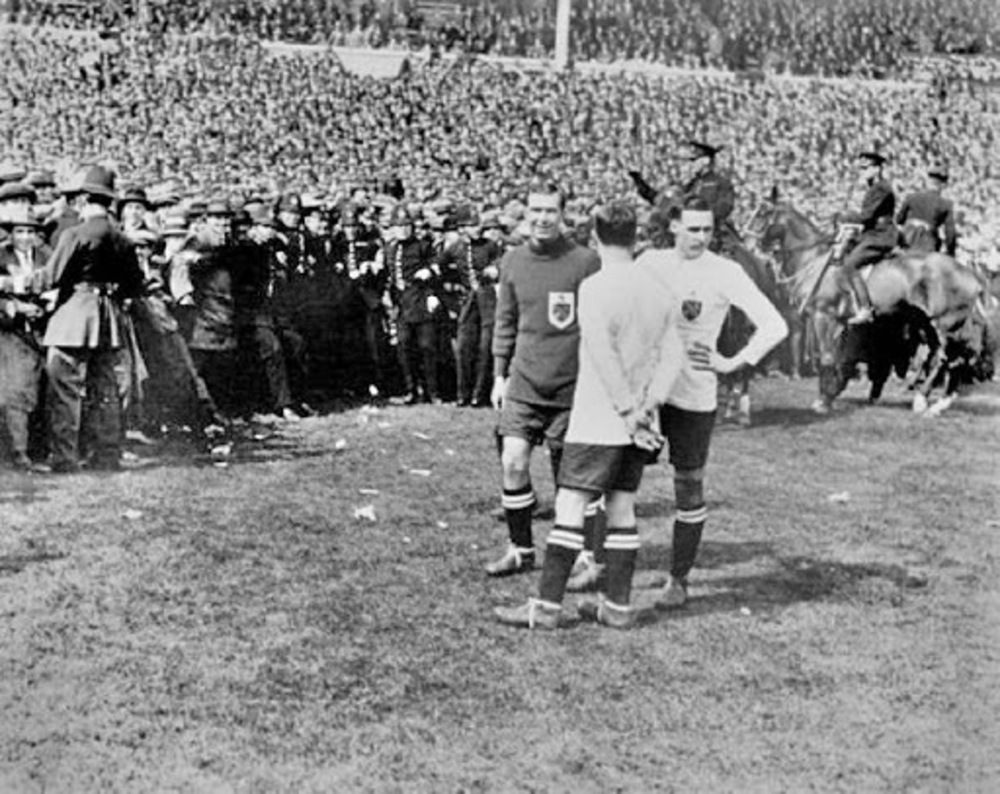
Pym (pictured at the cup final) initially followed the family profession as a youngster, namely becoming a fisherman, something he continued to do throughout his playing career and after.
Pym was signed by then-Southern League Exeter City from local side Topsham in December 1911, making his first-team debut three months later in a 1-1 draw at home to Stoke. This was the start of a remarkable 186 consecutive appearances for Exeter in the league.
He toured South America in 1914 with the Grecians, but, unfortunately, he broke two ribs in the first game against Argentine North, which Exeter won 1-0.
He brought a parrot back to England from Brazil, which happily settled in at St James' Park.
When it died, it was buried under the goal, to be hurriedly dug up again, to break Exeter's losing streak that had commenced at the parrot`s internment!
In 1920, Exeter sold Pym to Bolton Wanderers for what was then a huge fee of £5,000 - reported as a record for a Southern League player then.
Pym made 301 appearances for Bolton as well as appearing in the famous ‘White Horse’ FA Cup Final of 1923.
He played in two more winning cup finals in 1926 and 1929 and during his time with Bolton, Pym was capped for England three times.
In 1930 he left Bolton to return to the Southern League with Yeovil & Petters United, but he retired from playing after twelve months.
Living in Topsham again, he was often seen in the middle of the River Exe on a fishing trip.
He was made President of the local Topsham Town Football Club and was appointed assistant trainer at Exeter City – now a Football League club - in the summer of 1937.
He died in September 1988.
Outside left Chris Adams turned out for Romford and Leytonstone as an amateur before joining the Army during the Second World War where he played for their representative teams.
After being demobbed, he signed amateur forms for Tottenham Hotspur in June 1947, and made his debut for the reserve team in the Football Combination fixture at Aldershot.
He signed full professional forms on November 1948.
However, with a plethora of talented forwards at White Hart Lane at the time, Adams found first-team opportunities limited.
However, he did go on the 1950 tour to Germany and Belgium which saw Adams make his senior debut against Tennis-Borussia at Berlin on May 18.
He scored a hat-trick on the North American tour two years later when a Saskatchewan FA XI were defeated 18-1 at Saskatoon.
By then he had stepped up for his Football League debut, a 5-0 home win over Derby County in March 1952.
He played four successive games, away to Aston Villa and Wolves, and at home to Sunderland and Huddersfield Town, as Spurs finished runners-up to Manchester United.
His final taste of top-flight action came at Preston North End in October 1952.
In December 1952 he signed for Norwich City in an exchange deal which saw Roy Hollis arrive at White Hart Lane.
He scored 3 goals in 29 League outings for Norwich and played in one FA Cup match before joining Watford on March 1954.
His two-and-a-half-year Vicarage Road stay ended when he refused the part-time terms offered to him for the 1956/57 season.
On appeal to the Football Association, he was granted a free transfer and signed for Southern League side Dartford in November 1956.
He enjoyed a long and successful spell with the Darts, helping them to promotion to the Premier Division in 1958/59 and again in 1961/62.
He netted 21 goals in 216 appearances in total for Dartford, until retiring in 1964.
He worked in the motor trade and later as a painter and decorator.
He passed away in Brentwood, Essex in June 2012, aged 84.
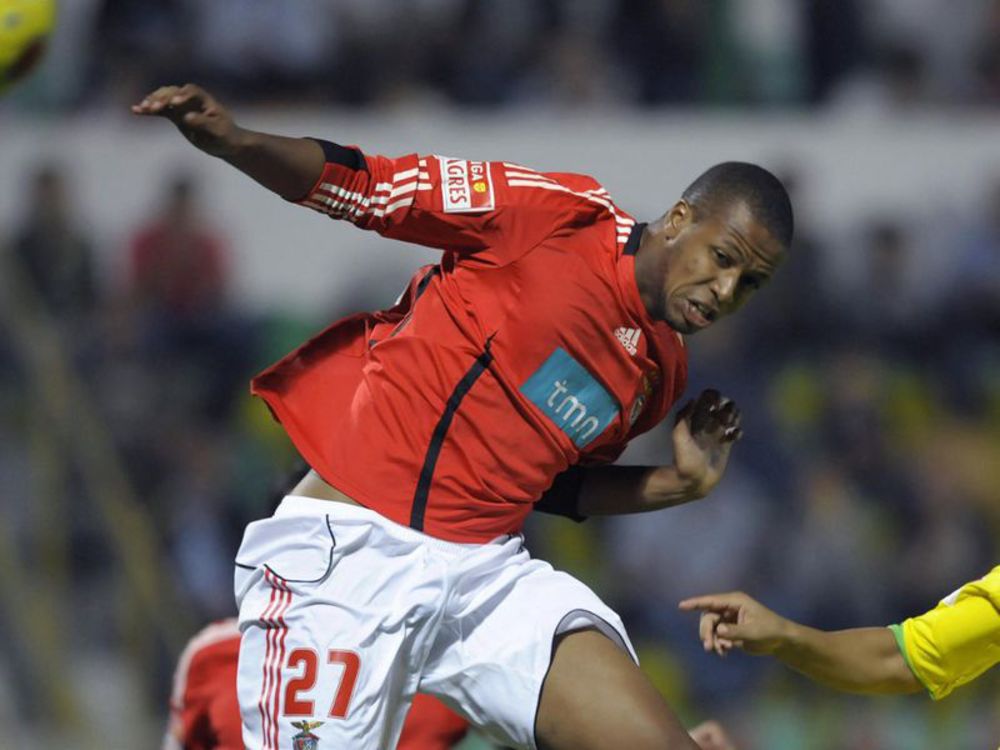
Did you know that Pele played in the Southern League?
Well, it wasn`t the famous Brazilian World Cup star of course, but Pedro Monteiro, who was known as `Pele`.
He spent a year or so with AFC Totton in the Southern Division One South & West.
The Portuguese-born centre-back twice cost £1m fees during a 400-plus game professional career that began in his homeland with Imortal FC.
He stepped up in levels by having spells with Farense and Belenenses before being signed by Southampton in the summer of 2006 for the first of his £1m fee.
He played 37 games for the Saints before moving to West Bromwich Albion for a similar sum a year later.
It was whilst playing for the Saints that Monteiro (pictured) won the first of his 11 international caps for Cape Verde, playing in the African Cup of Nations.
He spent a couple of seasons at The Hawthorns, helping them to promotion to the Premier League, before being released when they were relegated straight back down a year later.
In November 2009, he moved `north of the border` to sign for Scottish Premiership side Falkirk but made only 9 appearances before returning south to join MK Dons in August 2010.
But he left the Dons without making an appearance and signed for then-Northern Premier League outfit Northwich Victoria.
After 19 games for the Vics, he joined Conference North side Hednesford Town, where he made 30 appearances.
In January 2012 he signed for Conference South outfit Hayes & Yeading United and played 44 times before switching to league rivals Havant & Waterlooville in 2013.
He added 30 games to his tally with the Hawks before joining neighbouring Totton in the summer of 2016.
<6r
In May 1969 he was offered the chance to join Leicester City and was given an early chance by then-City manager Frank O`Farrell as an emergency right back at Ewood Park against Blackburn Rovers and then had a brief run in the side in competition with Ally Brown and Murray Brodie as a candidate for Andy Lochhead`s number 9 role.
After two further isolated appearances for the Foxes, he made an early departure in November 1971 when new manager Jimmy Bloomfield started applying the chequebook to rebuild his First Division forward line.
Tearse was transferred to Torquay United for a £15,000 fee which at the time was a record for the Gulls.
He scored 23 goals in 77 appearances between 1971 and 1975 and also had a 7-game spell on loan at Reading in 1974/75.
He returned to the Midlands after being released by Torquay and signed for Southern League Premier Division side Atherstone Town.
The Adders had a very decent side at the time and a considerable amount of money was being spent in an attempt to win the league.
The club shelled out a big fee to bring vastly experienced midfielder Joe Kiernan and his team-mate Ray Webster in a double deal from rivals Kettering Town midway through the previous season and they also boasted the likes of former Coventry City and Wolverhampton Wanderers star Ernie Hunt – he of the spectacular volley from a Willie Carr free-kick fame – as well as Malcolm Beard, who made over 350 appearances for Birmingham City and his centre-back partner Mick Preston, rated as one of the best non-League players never to have played League football.
The financial gamble almost paid off as they finished third in Tearse`s first season. However, the dream was only to last three more seasons before this version of the Adders folded at the end of the 1978/79 season when Tearse left.
Forward John Cozens was a success in both League and non-League football.
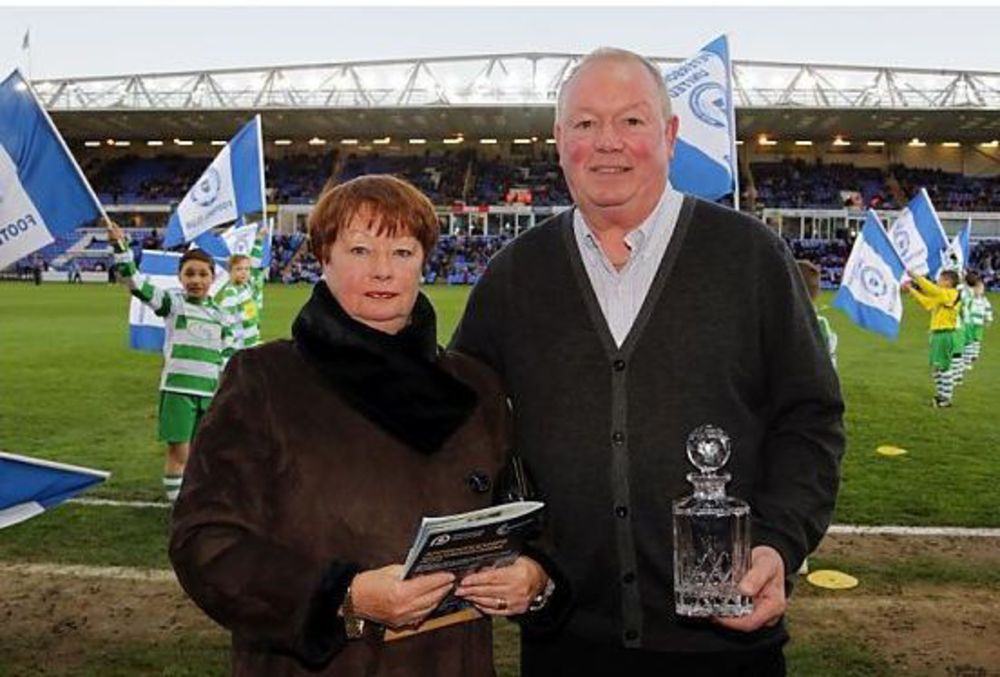
He began his playing career under the shrewd guidance of Harry Haslam at Southern League Premier Division club Tonbridge.
However, the emergence of a certain Malcolm Macdonald at The Angel Ground led to Cozens (pictured after being inducted into the Peterborough `Hall of Fame`) leaving in December 1965 for Athenian League side Hayes to obtain more game time.
He went on to be a prolific marksman for the club and holds the Hayes record for scoring the highest percentage of total goals in a league season.
In 1967/68 he scored 28 out of 57 goals, having scored 23 out of 51 goals, the second-highest percentage ever, the previous season.
In 115 games for Hayes, he scored a staggering 80 goals, including 45 in his last season.
His goals obviously attracted Football League scouts and whilst with the Missioners, where he also gained representative honours for Middlesex, the Athenian League and FA Amateur XI, although he failed to win an amateur international cap.
He returned to the Southern League Premier Division by signing professional forms for Hillingdon Borough in June 1968.
He spent two seasons with Hillingdon under former England full-back Jim Langley before being finally given a Football League chance with Notts County in 1970.
He went on to play 43 times for the Magpies, scoring 13 times, before transferring to Peterborough United in 1973.
His career blossomed at London Road where he made 140 appearances and scored almost 50 goals.
In 1977, he moved down to Cambridge United and ended his playing career at the age of 34 with 61 appearances and 3 goals as he finished up playing in a deeper role.
At the end of his playing career, he was appointed as assistant manager to John Docherty.
However, Cambridge were struggling and in 1983/84 embarked on a record 31-game unbeaten run which saw Docherty lose his job midway through the run and Cozens handed caretaker charge.
He wasn`t able to stop the rot, although he came close at Swansea, before John Ryan was appointed as the new manager.
By February 1985 Ryan was no more, sacked after winning just five matches during his 13 months in charge and Cozens briefly took caretaker charge once more before leaving the club after the appointment of Ken Shellito.
In 1988 Cozens made a return to football, taking over as manager of Southern League Midland Division side King`s Lynn, but left after 33 games in charge.
Defender Gerry Kavanagh began his career playing as an amateur with Midland Combination side Moor Green straight from school and spent six years with the Moors.
He left Moor Green early in 1970 to join Southern League Premier Division Nuneaton Borough where, after turning professional, he made 43 appearances and scored 2 goals.
When Stan Aston joined Southern Division One North outfit Rugby Town, Kavanagh followed him for 1971/72 season, but it was his next journey that brought him acclaim.
He helped propel Atherstone Town in 1972/73 to the runners-up spot in the Adders first season in the Southern League and he was voted the club’s player of the year.
Atherstone finished in eleventh place in the Premier Division the following season and 14th in 1974/75.
With Rugby Town closing down, Kavanagh left Atherstone in the close season of 1975, joining several of his former Rugby team-mates who had moved to Southern Division One North side AP Leamington and he stayed for three seasons at the Windmill Ground.
In 1975/76 the Brakes were promoted to the Southern Premier Division after ending in second place and reached the First Round of the FA Cup, losing 3-2 at home to Stafford Rangers. He made 51 appearances scoring 7 goals.
In 1976/77 Leamington made a successful start to their Premier Division campaign by reaching 12th spot and were knocked out of the Birmingham Senior cup losing by the odd goal in three to Atherstone Town in the semi-final. Kavanagh played 53 games and netted 8 goals that season.
His final season was in 1977/78 and although Brakes slumped to 18th position in the league, the club reached the Second Round of the FA cup taking Southend United to a replay at Roots Hall.
The Brakes also got to the semi-final of the Birmingham Senior Cup losing – in another replay – to Nuneaton Borough.
He played 46 games and found the net twice.
Kavanagh took over as manager of then-Midland Combination outfit Solihull Borough the following season but was back at the Windmill Ground in December 1981 as assistant to Graham Allner, but at the end of the season Kavanagh was forced to leave due to work commitments.
Before he finally hung up his boots, Kavanagh could be found playing in the Birmingham Works Football League alongside former team-mates Alan Jones and Mick Keeley.
Defender Joe Wade, or `Gentleman Joe` as he later became known, first played for Hereford United as a guest during the Second World War in the Southern League`s emergency Western Section.
He was stationed nearby at RAF Credenhill and he obviously enjoyed his spell with the Bulls as he was to return as player-manager some 13 years later.
After the end of the war, Wade was signed by Tom Whittaker for the mighty Arsenal, initially as an amateur and then on professional terms later in 1945.
He remained loyal to the Gunners for over a decade, despite making only a handful of appearances in the senior side prior to his breakthrough which came in the 1952/53 season after Wally Barnes picked up an injury during the 1952 FA Cup Final.
Described at the time as a `stylish, overlapping full back`, Wade was a virtual ever-present in the Arsenal side that lifted the First Division title that year.
He featured in 40 of the club`s 42 league games, ensuring his side won the championship ahead of the Tom Finney-inspired Preston North End, but only on goal average (as it was back then).
Remarkably, Arsenal didn`t win another trophy until the 1970/71 campaign!
Wade (pictured) injured his knee the following year in a floodlit match against Queens Park Rangers and after recovering, struggled to regain his place.
He continued to flit in and out of the side and also took up coaching duties with the Arsenal youth team.
Southern League club Hereford United were on the lookout for a new manager in the Spring of 1956 and approached Arsenal to seek permission to discuss the vacancy with Wade.
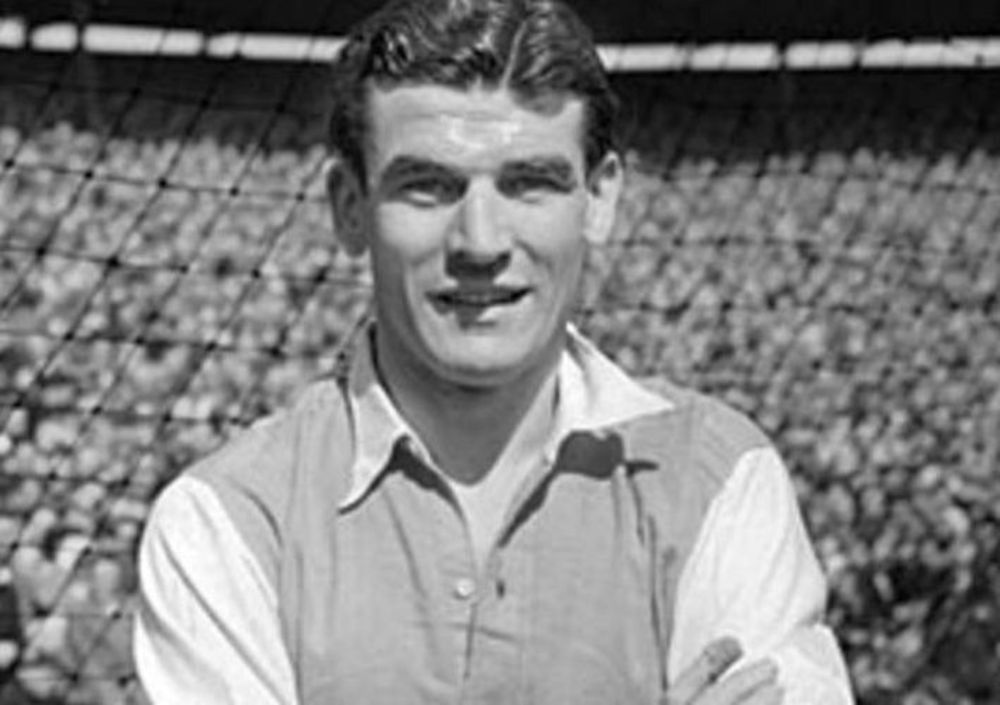
Initially, Hereford were put off by the Gunners request for a transfer fee but came up with a then-unique solution – a match between the sides at Edgar Street with the proceeds helping United recover much of the money.
A crowd of almost 7,000 swelled the coffers with the First Division giants running out 4-0 winners.
Wade`s professionalism quickly rubbed off on the Hereford players and such was his drive and enthusiasm, the left-back inspired the Bulls as they lifted two Southern League Cup trophies and reached the FA Cup Third Round for the first time in their history in 1957/58 after an amazing 6-1 hammering of Third Division (South) side QPR was followed by a 3-0 defeat at home by First Division Sheffield Wednesday in front of the largest attendance ever recorded at Edgar Street – 18,114.
The Bulls` performance in the cup that season led to Ronnie Clayton (not the former Blackburn and England man of the same name) and Freddie Jones being snapped up by Wade`s former club Arsenal for a combined fee of £5,000.
Wade also masterminded a tremendous Welsh Cup victory over Cardiff City at Ninian Park in 1958.
The Bluebirds were a Second Division side at the time, and it was Hereford`s first-ever win over Second Division opponents in a competitive fixture and a first ever away win over a League club.
In total, Wade made a total of 134 appearances for the Bulls, adding a league Charity Shield to the club`s honours board and led the team into the Southern Premier Division in that 1958/59 season as champions of the Southern North Western second, going on to win the overall league title after beating South Eastern zone winners Bedford Town 3-0 in play-off.
In 1962, Wade resigned as manager after opening a sports shop in the town.
He briefly returned as caretaker manager after the great John Charles quit in 1971 but otherwise concentrated on developing his business.
He passed away at the age of 84 in November 2005.

Most clubs are looking for volunteers. Find out more on the button below:
www.PitchingInVolunteers.co.ukAll the news and results in one place.
REGISTER